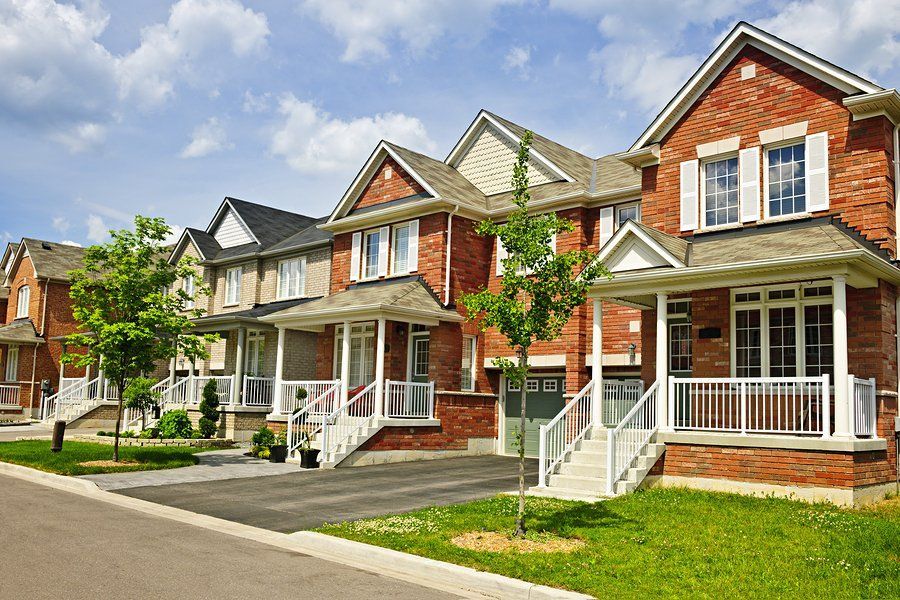Our Blog
Stay up to date on the the local market, neighbourhood news, and get expert advice about buying, selling, investing and renting.
LIVEHERE REAL ESTATE

Canada’s housing market just got a wake-up call. This week, the Canadian Real Estate Association (CREA) revised its 2025 outlook, forecasting 469,503 home sales—a 3% drop from 2024. That’s a sharp turnaround from the 8% growth they projected in January, and even April’s flat forecast. Behind the shift? High mortgage rates, trade risks, and stubborn inflation—all putting the brakes on buyer demand. Let’s break down what’s happening and what it means for investors and buyers watching the market. Key Highlights: CREA now expects 469,503 home sales in 2025 , down 3% from last year. The five-year Government of Canada bond yield remains above 3% , keeping mortgage rates high. June inflation came in at 1.9% , not low enough to trigger another rate cut. Until core inflation dips and yields fall , mortgage stress tests will continue capping buying power and delaying a full recovery. GTA Data Paints a Stark Picture The slowdown is especially visible in major markets like Toronto. According to Urbanation’s Q2-2025 condo market report: Only 502 new condo units sold , down 69% from last year and a staggering 91% below the 10-year average. Unsold inventory hit a record high with 2,478 move-in ready units—roughly five years of supply. Average asking prices dropped 6% year-over-year to $1,212 per square foot. Nationally, activity is sluggish. Sales rose a modest 2.8% from May and 3.5% from last June, but CREA now expects the average home price to fall 1.7% to roughly $677,000 —about $10,000 lower than its April forecast. Bond Yields and Mortgage Pressure The Bank of Canada paused its rate-cut cycle after its June move, holding the overnight rate at 2.75%. With core inflation still near 3% and new U.S. trade threats emerging, the odds of another cut at the July 30 meeting are low—under 6%, according to market pricing. This matters because fixed mortgage rates follow bond yields . And those remain elevated. Until we see the 5-year bond yield dip below 3% , mortgage costs will stay firm. Worse, the federal stress test still requires borrowers to qualify at 2% above their actual rate , meaning every 25 basis point rise cuts buying power by roughly 3%. Tariff Shock Adds to Uncertainty External shocks aren’t helping. On July 10, former U.S. President Donald Trump announced a 35% tariff on Canadian goods , effective August 1. The move rattled markets and pushed up yields further, as investors demand a premium for long-term risk exposure tied to trade uncertainty. These trade tensions only reinforce a broader theme: rate relief is on hold until inflation and geopolitical risks cool off . What History Tells Us This isn’t the first time housing has paused while waiting for a break on rates. In 2008–09 , the Bank of Canada cut rates by 425 basis points during the global financial crisis. Mortgage rates dropped and sales rebounded within a year. In 2015 , after an oil shock, two rate cuts helped stabilize the market. But in 2022 , surging inflation led to aggressive tightening—raising rates from 0.25% to 4.25% in ten months. The result? 2023 sales plunged nearly 20%. The lesson: Real estate is highly rate-sensitive. When inflation is under control, the Bank can step in to boost demand. But until that day comes, today’s high rates, stress tests, and global risks will keep the recovery in check. Bottom Line CREA’s downgrade confirms what many in the industry have been feeling on the ground: buyers are hesitant, inventory is stacking up, and affordability is still under pressure . If you’re a buyer, seller, or investor, the key takeaway is this: watch inflation and bond yields closely . A shift in either could kick-start a turnaround—but until then, we’re in a holding pattern. Want to talk strategy? Whether you're thinking of investing, buying, or just staying informed, let’s connect and make a plan that works in today's market.

Will the Bank of Canada cut rates? Core inflation is still above the two-percent target, so the Bank of Canada remains cautious even as headline prices fall. GDP growth and hiring have stalled, raising pressure for rate relief. Most economists now lean slightly toward no change; a Bloomberg survey shows that 17 of 30 expect a hold, compared to 13 who expect a cut. Why did the Bank pause in April? Headline inflation kept sliding, yet core prices stayed above the two-percent target and even firmed early in 2025. New U.S. tariffs lifted input costs and inflation expectations, so another rate cut would risk stoking demand just as supply shocks were pushing prices higher. Governor Tiff Macklem said the Bank must prevent tariff-related price spikes from becoming embedded. The Governing Council, therefore, held the overnight rate at 2.75 percent to reaffirm its commitment to price stability even as growth lost momentum. Trade uncertainty reinforced caution. The April Monetary Policy Report outlined two stark paths: limited tariffs with near-trend growth, or a prolonged trade war that could tip Canada into recession and push inflation above three percent. With outcomes ranging from mild slowdown to stagflation, the Council paused to gather more precise data and keep its options open. Future moves will hinge on how growth, inflation, and tariff risks evolve. Inflation trends: Headline vs. core CPI Canadian inflation now presents policymakers with a mixed picture. Headline CPI fell to 1.7 percent year-over-year in April from 2.3 percent in March, dropping below the two-percent target for the first time in more than two years. Three forces explain the decline. Ottawa scrapped its consumer carbon tax on April 1, 2025, immediately shaving several tenths off the index. Energy helped too: gasoline is about 18 percent cheaper than a year ago, and natural gas prices are 14 percent lower. Finally, food inflation eased as global commodity prices retreated. The Bank expected headline CPI to be near 1.5 percent for the second quarter, so the April reading was no surprise, but it does give households welcome relief. Core inflation, however, refuses to cooperate. Measures that strip out volatile and one-off items remain above target and are edging higher. CPI-Median climbed from 2.8 percent to 3.2 percent in April, its strongest reading since March 2024, while CPI-Trim reached 3.1 percent. These broad price pressures show domestic costs—wages, services, shelter—are still firm even as headline inflation slows. Core has hovered near three percent for six months, underscoring sticky underlying momentum. The Bank is therefore threading the needle—acknowledging that headline inflation is temporarily low while guarding against a re-acceleration driven by tariffs and expectations. Governor Macklem says tariff-related price spikes cannot be allowed to become embedded. Until core measures convincingly cool toward two percent, policymakers will keep additional easing on a short leash. GDP growth and employment: A slowing economy Canada’s late-2024 rebound has cooled. Real GDP fell by 0.2 percent in February—the first monthly decline since November—as mining, energy, and construction weakened. Some output was pulled forward in January when manufacturers rushed orders ahead of looming U.S. tariffs, then pared back. First-quarter GDP still grew 0.40 percent quarter-over-quarter, about 1.5 percent annualized, but consumer spending, business investment, and exports slowed. New U.S. duties on steel, aluminum, and autos are already cutting foreign sales, and the Bank of Canada warns a broader trade war could tip the economy into recession. Labour data echo the slowdown. Canada lost 33,000 jobs in March and gained only 7,400 in April, lifting the unemployment rate to 6.9 percent—an eight-year high outside the pandemic. Manufacturing alone cut 31,000 positions in April as U.S. orders dried up; retail and wholesale trade also fell. The number of unemployed workers rose by 39,000 in April and is almost 14 percent higher year-over-year, while 61 percent of those jobless in March were still searching a month later. Wage growth for permanent employees is 3.4 percent, only marginally above inflation, pointing to slack rather than overheating. BoC commentary: Caution amid uncertainty Governor Macklem says tariff turmoil forces the Bank to “change the way it conducts policy to become less forward-looking than normal.” Guessing wrong could “make matters worse,” so policy will rely on incoming data and “set policy that minimizes the risk.” Each meeting is live: if conditions “crystallize,” officials may “act quickly,” cutting for a severe downturn or holding if inflation heats up. Nothing is pre-committed. The two-percent inflation target is non-negotiable. Macklem insists there is “no doubt” about that mandate. April’s statement pledged to keep Canadians’ “confidence in price stability” while supporting growth. Risks run both ways—tariffs can sap exports yet lift consumer prices—so policy must strike a balance. Monetary policy cannot erase trade uncertainty, but it can steady demand. April’s pause showed the Bank will not slash rates simply because growth softens if price pressures linger. Forward guidance stresses vigilance and readiness to “proceed carefully” as each new data point arrives. Market expectations for June 4th: A close call Momentum shifted on May 20th. Core inflation above three percent trimmed the implied June-cut probability to roughly 40 percent. Most economists now lean slightly toward no change; a Bloomberg survey shows 17 of 30 expect a hold. A 90-day U.S. tariff delay announced in April reduced near-term risk. Beyond June, investors broadly assume more easing. The two-year yield of around 2.60 percent already sits below the 2.75 percent overnight rate, signaling future cuts. Markets and economists alike expect the policy rate to end 2025 in the low-two-percent range, but whether the next move comes in June, July, or later depends on how growth and inflation change.

Spring is the perfect time to refresh your outdoor space and get your backyard ready for warm-weather enjoyment. A little effort now can make a big difference in how your outdoor areas look and function. Use this Outdoor Spring Cleaning Checklist to tackle your porch, patio, siding, gutters, and landscaping so you can fully enjoy the season ahead.

A Simple Guide to Tax Deductions for Your Rental Property Managing a rental property comes with its perks, but it also means navigating the world of tax deductions. The good news? With the right tools and a little know-how, you can maximize your deductions and minimize your tax bill. Here’s a simple guide to help you through the process. Use TurboTax (or a Similar Tool) If you’re new to rental property deductions, using a tool like TurboTax can make the process easier. TurboTax is run by Intuit and even integrates with QuickBooks Online if you want to get into the finer details. It allows you to input your expenses and automatically calculate the deductible amounts, saving you time and reducing errors. Calculating Rental Expense Deductions When deducting expenses related to your rental property, you’ll need to prorate certain costs based on the space you’re renting out. Here’s how to do that: Determine the Rental Space Percentage Divide the size of your rental unit by the total area of your home. For example, if your rental unit is 700 sq ft and your total home is 3,000 sq ft, that equals approximately 23% (700/3,000 = 0.233). Apply This Percentage to Monthly Costs You can deduct this percentage of monthly housing expenses, including: Utilities (electricity, water, internet) Property taxes Home insurance General home maintenance and repairs Many tax software programs, including TurboTax, allow you to enter the full amount and then apply a percentage. Alternatively, you can calculate the deductible amount manually. Mortgage Interest Deductions You can also deduct a portion of your mortgage interest . Use the total interest from your 2024 mortgage statement (not individual monthly payments) and apply the same rental space percentage. Important: You can only deduct the interest portion of your mortgage payment—not the principal, which goes toward paying down your loan balance. Phone Expense Deductions If you use your phone for managing the rental, you can deduct a reasonable percentage of your bill. 25% is a safe estimate, while 50% might be the upper limit if you use it extensively for rental-related tasks. Accounting for Partial-Year Rentals If your rental unit was only in operation for part of the year, you need to adjust your annual expenses accordingly. For example, if you rented for 4 months , you would deduct 4/12ths (33.33%) of annual costs like: Mortgage interest Property taxes Home insurance For monthly costs, you can simply use the bills from the months the unit was rented. Fully Deductible Rental Expenses Certain costs are 100% deductible if they are directly related to the rental unit. These include: Appliances purchased for the rental (e.g., a new fridge) Repairs specific to the rental unit (e.g., fixing a plumbing issue) Setup costs (e.g., painting, disposal fees) You can also deduct any leasing fees or report the net rent you received after these costs. What If You Show a Profit or a Loss? Once you add everything up, you may find you’re either breaking even, showing a loss, or making a profit: If you show a loss: This could lead to a small tax refund . If you show a significant profit: Reach out, and we can discuss strategies to minimize your tax liability. Don’t Stress—You’ve Got This The process may seem complex, but it’s manageable with the right approach. Even if you make a minor mistake, it’s unlikely to cause major issues. The chances of an audit are relatively low, especially for honest landlords reporting their income accurately. If you’re unsure about anything or want to go over the finer points, feel free to schedule a call. We’re here to help make tax season a little easier. Happy Renting!









